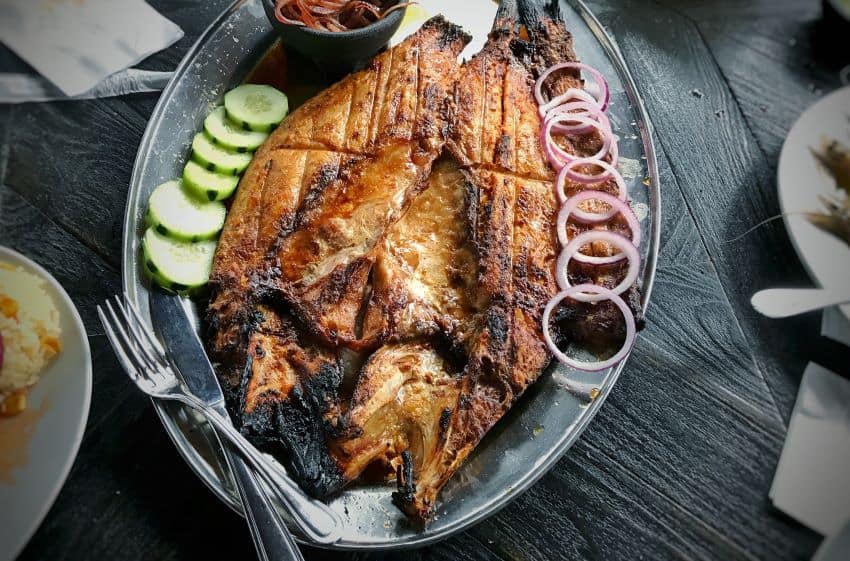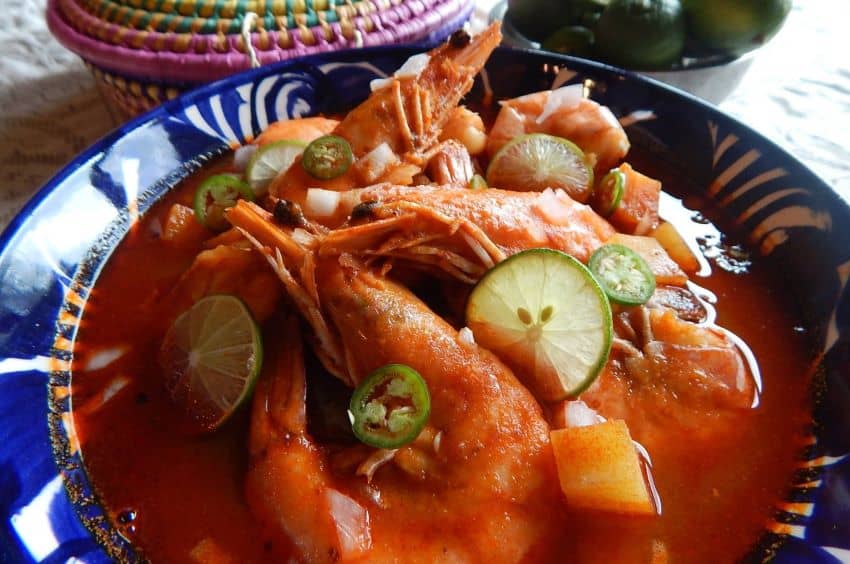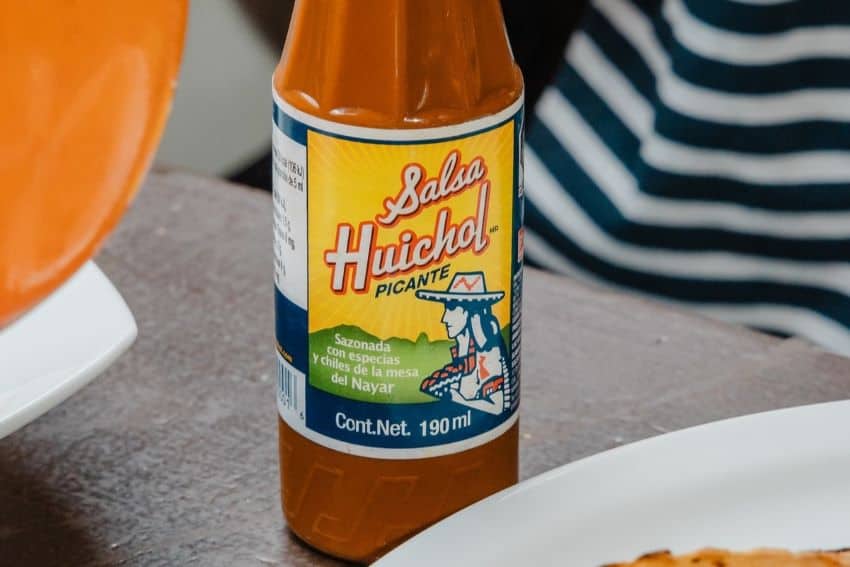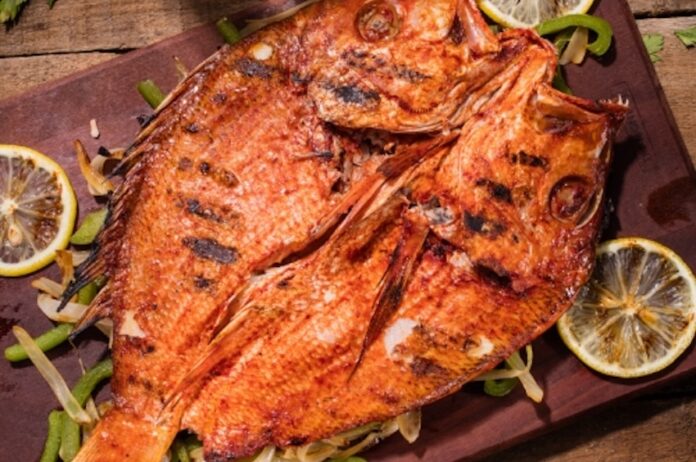The island of Mexcaltitán is a remarkable place — not only because it has been designated a pueblo mágico and nicknamed “La Venezia Mexicana” but also because it has been posited as one of the most legendary sites in Mexican history and the birthplace of one of the country’s signature culinary dishes, pescado zarandeado.
Nayarit’s Mexcalitán is considered by many to be the ancestral home of the Mexica, the so-called Aztecs who left their legendary homeland of Aztlán after the god Huitzilopochtli told them to seek out a new one. They were told the new location would be revealed via symbol: an eagle perched atop a nopal cactus with a serpent in its beak. This prophecy ultimately led them to Tenochtitlán, now Mexico City.

As if that weren’t enough to distinguish Mexcaltitán as one of Mexico’s cultural landmarks, the island town is also believed to be the original home of pescado zarandeado, an iconic Pacific Coast seafood specialty.
The history of pescado zarandeado and how to make it
Pescado zarandeado has a 500-year history in Sinaloa and Nayarit, with pre-Hispanic roots. Indigenous peoples of the region, like the Totorame, were the progenitors of this cooking method, with Mexcaltitán identified as the first place where it flourished.
To make zarandeado, one needs a zaranda, or basket, to encase the butterflied fresh fish so that it won’t fall apart while being grilled. Indigenous chefs utilized mangrove wood for these baskets and as fuel for the fire. However, the quest to protect mangrove ecosystems has led to environmental regulations in recent decades. Thus, cooks now mostly use metal baskets to hold the fish, grilling them over charcoal.
Marinades have likewise evolved. Once fish like huachinango (red snapper), róbalo (sea bass), or pargo (Mexican barred snapper) have been hooked, they are traditionally marinated with ingredients such as achiote, garlic, lime juice, and salt and pepper. However, in modernity, other potential flavoring options have been added to this list, including mustard, mayonnaise, and salsa inglesa (Worcestershire sauce).
Grilling time varies according to the size of the fish, but it shouldn’t take longer than about 15 minutes. Once done, the fish is plated whole so that pieces can be flaked off with a fork and eaten. Cucumber, tomato, and onion are served with the fish, as are tortillas and a salsa picante (more on the brand to choose later).
Other iconic seafood dishes in Nayarit cuisine

The Totorames are also credited with another seafood staple in Nayarit and Sinaloa: tlaxtihuilli. This traditional soup, also born in Mexcaltitán, is made with boiled shrimp but flavored with ingredients like guajillo and serrano peppers, cilantro, epazote, and lime juice. It’s given a thicker texture courtesy of nixtamalized corn dough (masa), which has led to its labeling as a kind of “shrimp atole.”
If it’s not already apparent, seafood is ubiquitous in Nayarit. Because of its over 180 miles of coastline, dishes like aguachile and ceviche form the backbone of Nayarit’s gastronomy, with shellfish such as shrimp and oysters and fish like sea bass, snapper, tuna, dorado, and wahoo caught and eaten in abundance.
Aguachile is a Sinaloan invention, so its glories will be extolled when that state is in the spotlight. But ceviche, chicharrón de pescado, and shrimp pozole all merit mentions as distinctive and delicious regional dishes. Ceviche estilo Nayarit, for example, is made with either minced fish or shrimp and is immediately identifiable via the inclusion of carrot along with the standard tomato, cucumber, and onion.
Of course, Nayarit’s beloved pozole doesn’t feature pork or chicken as the protein but shrimp. However, fish or shellfish like clams and octopus can also be used. As in all pozoles, hominy is a signature ingredient. But rather than using corn varieties like cacahuazintle, Nayaritas prefer regional heirloom maíz of the bofo or tabloncillo type.
Chicharrón in Mexico usually means pork rinds, but there is a seafood version in which fish species like cabrilla, róbalo, and tilapia are cut into strips and deep-fried after being coated with flour and perhaps even dipped in egg batter. Ideally, these delicacies are served in taco form with salsa and a squeeze of lime.
The story of Salsa Huichol

The one thing all Nayarita culinary delicacies have in common is that they taste better with a little Salsa Huichol added. The brand began from humble beginnings in Tepic in 1949. However, founder and former bricklayer Don Roberto López Flores managed to build an empire with the aid of a family recipe and 40 pesos of capital, with the first outlays for a hand grinder and a few kilos of cascabel chiles sourced from Indigenous Huichol growers from Mesa del Nayar, plus a hand capper to close the empty Pacífico beer bottles he was using for packaging.
Once the bottles were filled, he would pedal around on his bicycle to sell them to local bars and restaurants. It’s hard to imagine he ever had much difficulty. The sauce is beautifully textured, and its spiciness — courtesy of cascabel and habanero chiles — is balanced by several sophisticated flavors.
According to legend, he got the recipe from his great-grandmother. If so, she had exquisitely cosmopolitan tastes. Some ingredients are secret, but the ones we know include Brazilian pink pepper, Madagascar cloves, Iranian cumin, and an oregano variety from Durango, which is earthier, more pungent, and citrusy than the Mediterranean version. Iodized salt and vinegar also play significant roles.
“We can change the image on the box, the lid, the production technology, but the formula is untouchable!” Don Roberto told Animal Gourmet.
By the time he passed away in 2019 at the age of 86, he was a hot sauce legend as indelibly associated with Nayarit and the state’s beloved pescado zarandeado. Today, the company continues to sell its products around the globe, turning out over 100,000 bottles daily from its headquarters in Xalisco.
Smoke ‘em if you’ve got ‘em
Nayarit is also notably the largest tobacco-growing state in Mexico, producing a robust 84% of the national total. This includes tobacco rolled in some of the world’s most famous cigarette brands, like Marlboro. So, if you’re fond of the old saying, “después de un taco, un buen tabaco,” you can light one up after your next Nayarit-style feast.
Chris Sands is the Cabo San Lucas local expert for the USA Today travel website 10 Best, writer of Fodor’s Los Cabos travel guidebook and a contributor to numerous websites and publications, including Tasting Table, Marriott Bonvoy Traveler, Forbes Travel Guide, Porthole Cruise, Cabo Living and Mexico News Daily. His specialty is travel-related content and lifestyle features focused on food, wine and golf.
